Increasingly, chocolate-makers turn to science
Researchers are studying chocolate to boost its potential health benefits and produce more of this tasty treat
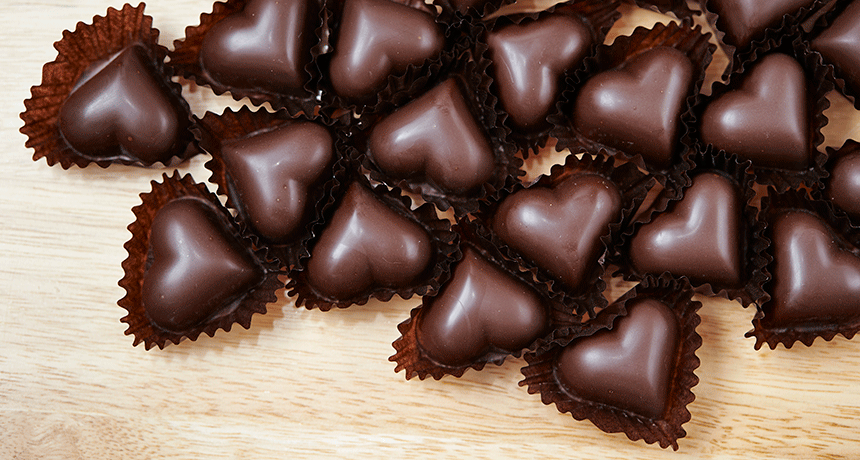
Chocolate is one of the most prized treats. But ensuring there will be enough of the raw ingredients to satisfy our hunger for it has candy-makers and farmers consulting scientists around the globe.
ma-no/iStockphotoIf you’re a fan of chocolate, every occasion is right for this treat. Feeling down? Eat some chocolate. Celebrating? Eat some more. Want to show your Valentine how special you think your sweetheart is? Offer up chocolate!
People have been enjoying chocolate as a food, drink and medicine for thousands of years. The ancient Maya and Aztecs called chocolate kakaw and used it as medicine.
They also made chocolate offerings to their gods. Chocolate comes from the cacao (Kuh-KOW) tree, and its scientific name reflects its history. Theobroma cacao translates to “cacao, food of the gods.” These days, chocolate is not just for deities. The treat has become popular around the world.
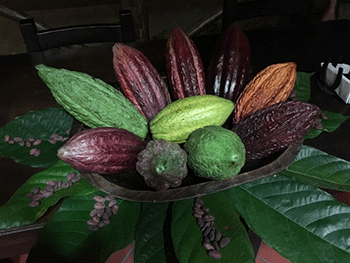
It’s so popular, in fact, that people spend more than $90 billion on it each year. And that number just keeps growing.
People may eat chocolate because of its taste. And many adults justify that treat because they’ve heard it has health benefits. But chocolate’s popularity also has downsides. Scientists are scrambling to help farmers produce enough cacao to meet the growing demand for chocolate. One big challenge: Plant diseases threaten crop yields. So scientists are working hard to understand the cacao tree in hopes of protecting it.
Ancient treat
Cacao is a tropical tree. And it’s unusual: Its fruits, called pods, grow directly on the tree trunk. Inside the pod’s citrusy flesh are large, brown seeds. They are what hold the starting material for one of the world’s tastiest treats.
Those seeds, like the tree, are called cacao. After being harvested, they’re heaped in piles or poured into boxes to ferment. During this process, microbes break down the flesh. As they digest its sugars and other chemicals, they give off heat. That heat breaks down cells within the bean. This lets chemical reactions take place that produce the flavors we recognize in chocolate. After four to seven days, the seeds are laid in the sun to dry. Now they’re ready to be roasted and ground to make cocoa.
Cocoa is the basic ingredient in chocolate. When cocoa is mashed into a thick brown paste, it’s called chocolate liquor. Milk and dark chocolate both contain chocolate liquor. (Hardened cocoa liquor is also what chefs call unsweetened baking chocolate.) Cocoa butter is the fat in chocolate liquor. That fat can be separated out and used to make white chocolate. Chocolate candy also includes sugar, vanilla, lecithin and sometimes milk. (Lecithin is an emulsifier — a chemical that helps fatty and non-fatty ingredients stay smoothly mixed. That helps to stabilize the final product.)
The sweet confection we enjoy today is nothing like the original forms of cocoa. The Maya mixed cocoa, water and chili pepper to make a spicy, bitter drink. It wasn’t until Spanish explorers sent cocoa back to Europe that candy makers came up with our modern, sweet version.
Story continues below image.
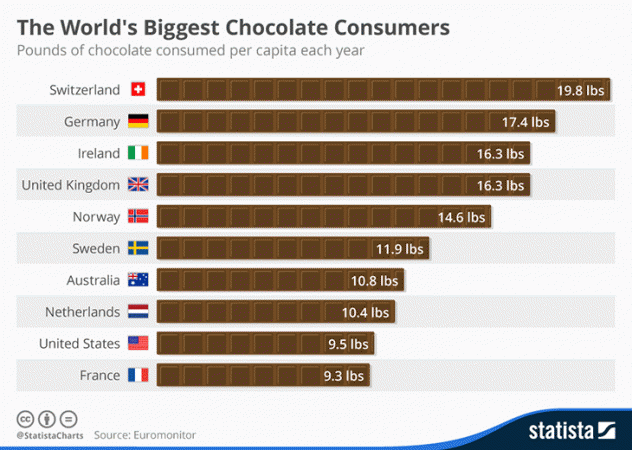
The ancient Maya and Aztec people also mixed cacao seeds with various herbs to make medicines. They used these to treat symptoms such as diarrhea, fever and cough. Cacao has a long history as a medicine — but scientists have only recently begun to investigate its benefits.
Cocoa for health
Cocoa contains antioxidants. These molecules stop chemical reactions that involve oxidation, which can damage the body’s cells. DNA — the molecule that gives instructions to each of our cells — is especially vulnerable. Damaged DNA can eventually lead to cancer. So antioxidants are an important part of our diet.
Many kinds of dark chocolate are high in antioxidants. Milk chocolate and white chocolate are not.
“Many research studies have shown that antioxidants protect DNA,” notes Astrid Nehlig. She is the director of research at the National Institute for Health and Medical Research in Strasbourg, France. Fruit, chocolate and coffee are all high in antioxidants. The DNA in people who consume a lot of these foods is less likely to break. And when it does, the body is more likely to repair it, Nehlig says.
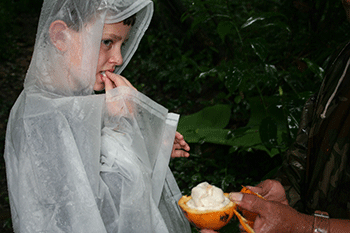
Flavanols (FLAV-uh-nahls) are another important group of cocoa compounds. Arteries carry blood from the heart to organs and other tissues from head to foot. Flavanols can dilate — or widen — those arteries. That helps blood flow better, Nehlig explains. Many studies have shown that eating cocoa products can keep blood pressure low and help improve heart health, thanks in part to its flavanols.
In fact, improved blood flow seems to be the one benefit of cocoa products that holds up in study after study. Last year, medical researchers in Australia pored over 35 different studies. This type of investigation is called a meta-analysis. It looks at the big picture.
Eating cocoa compounds indeed appears to improve blood flow, these researchers reported. In April 2017, they shared their findings in the Cochrane Database of Systematic Reviews.
Improved blood flow helps the brain work better, notes Nehlig. So more blood reaching the brain means more energy for brain cells. Some research has found that learning and memory improve when people eat cocoa flavanols. But researchers do not yet know exactly how these compounds work, she adds.
It’s also unclear whether chocolate provided the flavanols in question. Researchers usually don’t give study participants chocolate. Instead, they give them cocoa flavanol supplements. So what? Certain candy-making processes may remove or alter the flavanols. That could erase their brain-sparing benefits. So it’s too soon to know whether cocoa flavanols might limit memory problems (including dementia) later in life.
Flavanols and other cocoa compounds may improve health in other ways, too. Studies suggest that molecules in cocoa can reduce symptoms ranging from anxiety to allergies. As encouraging as all such studies sound, it’s important to keep in mind that they often have come from labs funded by the chocolate industry.
Not all chocolate is a ‘health’ snack
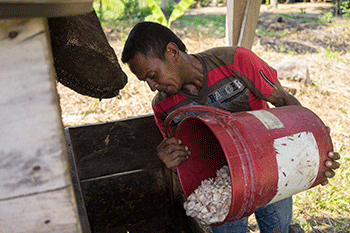
Ready to rush out and buy chocolate for your health? First, consider this: Not all chocolate contains these potentially beneficial compounds.
Much of the chocolate sold today is low in cocoa flavanols, says Susan Miszewski. She works for Mars Symbioscience in Germantown, Md. “It is a common myth that chocolate with a high percent of cocoa solids (such as 70 percent dark chocolate) has higher levels of cocoa flavanols,” she says. Most chocolates do contain some of these flavanols. But that amount varies a lot, Mars scientists and their university colleagues have shown. So when it comes to these health boosters, she says, “chocolate is not a reliable source.”
The normal steps in harvesting a cocoa bean and processing it into a candy bar destroy flavanols along the way, she notes. Those processes include fermenting and roasting the seeds. Lowering the acidity of the cocoa also can break down flavanols. The acidity falls when chocolate makers add a base — or alkaline material — to cocoa. This alkalization makes chocolate less bitter, she says. But all of that processing means the final piece of chocolate has likely lost many of its initial health-boosting flavanols.
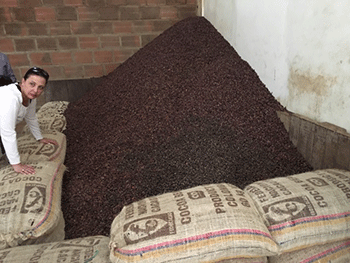
And don’t forget: Even chocolate that still contains flavanols is chock full of calories, sugar and fat.
Scientists at Mars, the candy company that makes M&M’s, know the potential health benefits flavanols can offer. So they have developed a process to preserve them in cocoa, Miszewski says. Cocoa prepared in this new way isn’t used in candy bars, though. So it won’t make your sugary snack suddenly healthy. But Mars is using this material to develop potentially health-enhancing flavanol-rich products.
Long-lasting supply
Mars also has joined forces with other companies, universities and the U.S. Department of Agriculture to map the cacao genome. That’s the complete set of genes that make up the biological instruction manual in each of the plant’s cells. The resulting Cacao Genome Database is freely available for anyone to use.
Why build such a database? Between 40 million and 50 million people worldwide work in jobs related to cacao, cocoa and chocolate. So understanding and protecting the cacao tree is globally important.
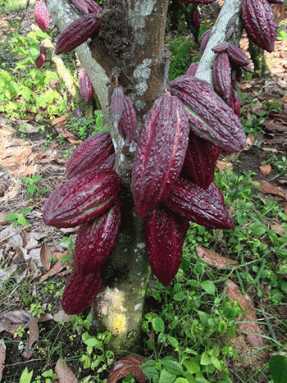
Long ago, Central and South American rainforests were the only source of cacao trees. As Spaniards and other Europeans colonized new parts of the world, they found the trees and eventually moved some of these trees with them. Now cacao grows across the world’s tropics. A whopping 70 percent of cacao today comes from Africa, where the climate is just right. Ghana and the Ivory Coast grow most of that — 60 percent of the world’s total.
Growing cacao is a good way for farmers to earn money and support their families. But the demand for cacao keeps increasing. That makes it difficult for farmers to grow enough. Diseases also threaten their trees. Cacao-killing diseases would do more than take away a tasty treat — they also could plunge millions of people into poverty. Scientists are using the Cacao Genome Database in hopes of heading off both of these problems.
Mark Guiltinan and Siela Maximova are plant biologists at Pennsylvania State University in University Park. They use the database all the time. “If there is a gene we are interested in, we can look it up in the database and use that information to design future experiments,” explains Guiltinan.
His group may look for a gene variant that may make these plants better at fighting off disease, for example. Or they may seek a gene to produce more flavorful fruit. They may even search for genes that allow the trees to grow more quickly.Such genes may already be known to exist in other, better-studied plants. Examples might include soybeans or corn. “We can find genes in cacao that are similar . . . to some of these,” Guiltinan says. And, he points out, “Often they share a similar function.”
He and Maximova can then test whether these genes actually work the same way in cacao trees as in other plants. The scientists don’t have time to wait for each seed to grow into a new tree. Instead, they have developed a way of cloning trees using the parts of one tree’s flowers (See “How to grow a cacao tree in a hurry”.)
Then they check to see if the new trees make more pods, for example, or resist certain diseases. One such disease is called frosty pod. It makes cacao pods turn white and rot on the tree. Another is called witches’ broom. This infection spreads throughout the tree and can eventually kill it. Fungi cause both diseases.
Guiltinan and Maximova use their gene identification process to find trees that have several of the traits they want. The scientists then make many copies of those strong, healthy trees.
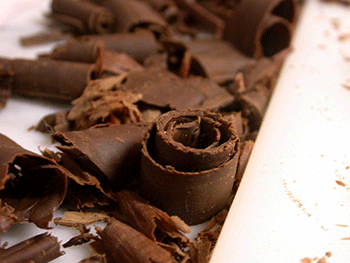
So far, the researchers have helped to clone 100 varieties of cacao tree. The result? About 100 million cacao trees that come from these newfound varieties have been planted in fields across Indonesia. And, Guiltinan adds, those trees are living up to their potential. They are growing more pods and resisting disease.
“Cacao plants are great for the environment, protecting soil, water and habitat,” he notes. And the income from farming cacao can be a big help to people in developing countries, he adds.
The quest for strong and healthy cacao trees will be important for meeting the world’s growing demand for chocolate and cocoa. As more people learn about cocoa’s potential health benefits, that demand might grow even more. Scientists hope their work will ensure a long-lasting supply of cacao.
That should be good news for cacao growers — and chocolate lovers — everywhere.







